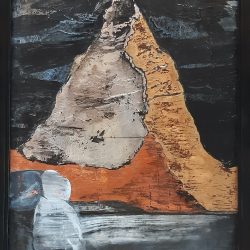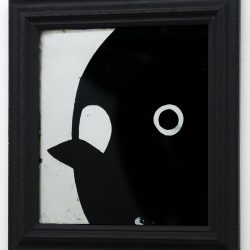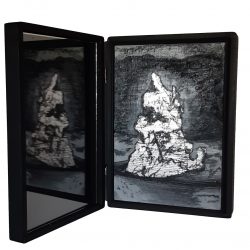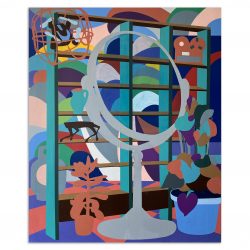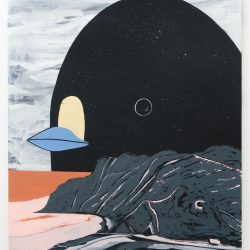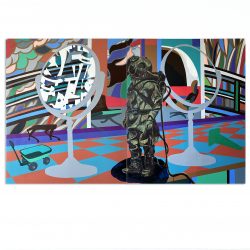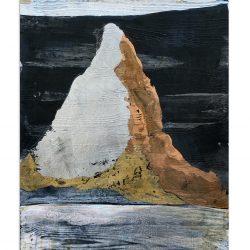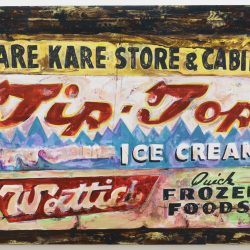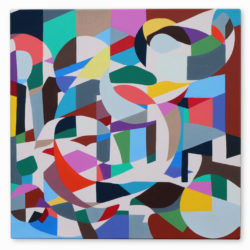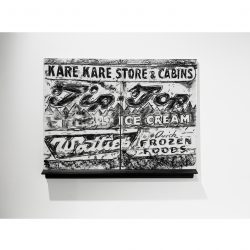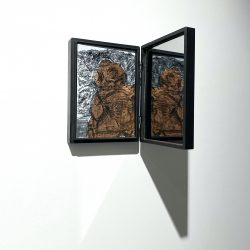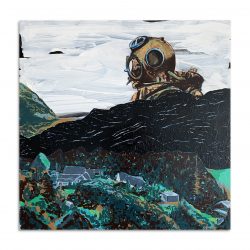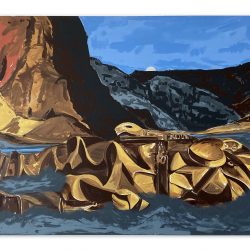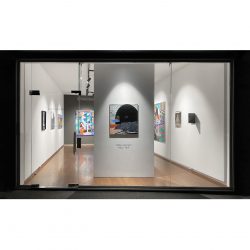Adrian Jackman | Field Trip
22 April – 11 May
Adrian Jackman’s new exhibition: Field Trip, is a departure and return to earlier art making practices, surrounding narratives of the figure in landscape and surreal worlds. This is combined with his well known paintings of solid flat colour where still-life and fragments of landscape take centre stage within a geometric environment, arranged and held together with clean sharp lines.
An artist residency in Karekare in 2020, presented Jackman with a unique opportunity to observe and draw the Karekare Coast line and it’s environs. His initial approach began with ‘Plein Air’ exercises while looking at pre-photographic techniques as a means of rediscovering this landscape and the artists who had depicted it. ‘During this his time of reflection at the residency, Jackman made a makeshift ‘Claude Glass’ (black mirror). This mirror was first used by 17th Century landscape painters and tourists to observe and frame a given landscape. This slightly convex in shape small mirror with a surface tinted in a dark colour, could allow the viewer to turn their back on the scene and observe the framed view.
From these early residency drawings of MT Zion, Governors Rock and the Watchman, Jackman realised that the Claude Glass offered an opportunity to look back at his own painting practice while taking the mirror on a unique field-trip through this unique landscape. Adrian’s paintings are essentially an engagement with both the real and the imagined worlds, filtered through a process that explores the impact of technology on modern life. He draws the viewer into a painterly world, using historical and technological narratives a mixture of nineteenth and twentieth century art reworking and combining allowing the viewer to see through a different lens.
Jackman treats his methodical process of collecting and re-rendering drawings of everyday objects to a rigorous, yet whimsical process. He likens this pick-and-choose approach as analogous to the modernist musical theory of ‘indeterminacy of composition’. Most famously utilized by John Cage, this experimental approach to music enabled a fluidity whereby the conceptual process employed by the artist was not below the content, but rather the process itself was brought to the forefront, with meaning and structure native to the presented layers of auditory content to float freely within a fixed plane.
